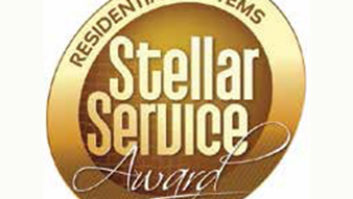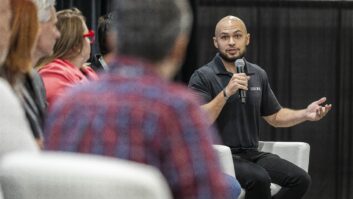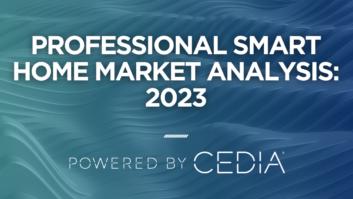Sometimes we do things how we always have, even if we know that there is an easier way. It could be stubbornness, laziness, fear, lack of knowledge, or a thousand other reasons. When I was a kid, my father brought home a microwave oven. My mother almost killed him and was ready to throw it out the window. It must have sat unused on our kitchen counter for weeks before she tried it out. Before long, Mom was using that microwave almost every night to prepare some part of the meal, and it became an essential tool for her.
Similarly, when Crestron first introduced the Pyng hub at CEDIA in 2014, most dealers saw it as an offering for the entry-level market—something to compete with not just Control4 and Savant, but Logitech Harmony as well. While many dealers welcomed an easy-to-implement, cost-effective solution, a majority rebelled against Pyng and felt it was putting Crestron in a race to the bottom.
The company quickly refined its dealer marketing to position Pyng as a way to quickly integrate lighting, shading, HVAC, and security into a project without heavy programming. It was something the average tech could use to help get a project started so that programming resources could be deployed to focus on more complex and value-added integrations. Some dealers saw the benefit of using Pyng in this way, but many continued to plod along on installs by going the traditional route of programming everything in SMPL.
As an early supporter of Pyng, we started using it to get systems up and running quickly. It was a great tool to get the basics of a home automation system off the ground fast. It had the added benefit that, when pulled into a larger project, the Pyng interface could still be exposed to the client so they could edit and create scenes and schedules on their own, without having to call us to change programming and without having to incur costs. It gave clients much more control over their own system, which was something clients and dealers had been clamoring to have for years.

Then we were introduced to Crestron Studio, and we became even bigger supporters of it. This is a streamlined software for programming the audio and video aspects of a project. There is a graphical interface for creating “source-routes,” connecting inputs and outputs from device to device by dragging and dropping connections on the screen. Remote controls can be configured as can touchpanels and apps. We have aggressively advocated for further development of Studio within the Crestron engineering and product management groups and it has come leaps and bounds in the past couple of years.
Now we combine the power of Pyng and Studio on almost all of our projects. We use Pyng to configure and acquire all of our lighting, shading, security, and HVAC devices and to give the client more control over scenes and scheduling. We use Studio to configure all of the audio and video components in the home. Then both sets of tools are tied together in a SMPL program. The benefits are multifaceted:
1) Speed: High-level programming resources are not wasted on basic, mundane tasks; we can get the guts of a system up and running faster than ever, reallocating our programming assets to more value-added tasks.
2) Cost: With faster implementation and lower programming costs, we are able to complete projects at a lower cost than ever, passing savings along to the client, as well.
3) Profitability: Tied to the previous points, by lowering our costs and finishing projects faster, we are more profitable than ever, even after accounting for the savings we pass on to the client.
4) Increased Competitiveness: Lower cost, faster implementation, and better profitability all leads to a more competitive solution that we can offer at a lower cost to clients. Now we can compete for projects that we used to lose to other solutions, and do it very profitably.
5) Increased Client Buy-In: When clients can have some control over their systems and not rely on expensive programming to make small changes, they feel more comfortable. Pyng allows clients to create and edit scenes, schedule events, and add security codes, all on their own. This is a powerful feature that makes the sale easier and takes a burden off of our programming support for minor changes down the line.
6) Employee retention: Programmers aren’t bored with mundane tasks like changing lighting levels in a scene. They get to do cool things they love to do and that challenge them. Additionally, techs are doing more configuration and are involved deeper into the project, growing their skillset and exposure.
And it isn’t just Crestron that’s been working to get dealers to take advantage of new tools that make things easier with app-based setup and client interaction. Control4 introduced Composer Express some time ago to allows techs to completely configure an AV system via an app, setting up everything from audio and video inputs to IR routing, IP addresses, and Zigbee devices. Walking around a client’s home with a phone acquiring devices is much easier than balancing a laptop in one hand while pecking on keys with the other, to do the same thing, yet I’m sure that approach took time to catch on with dealers.
Reach out to your control manufacturer of choice and see what tools they have introduced in the past few years that streamline installs, configuration, and programming. Increase your sales, your profits, your client satisfaction, and your employee engagement.







